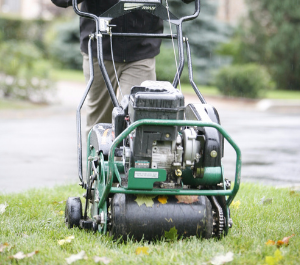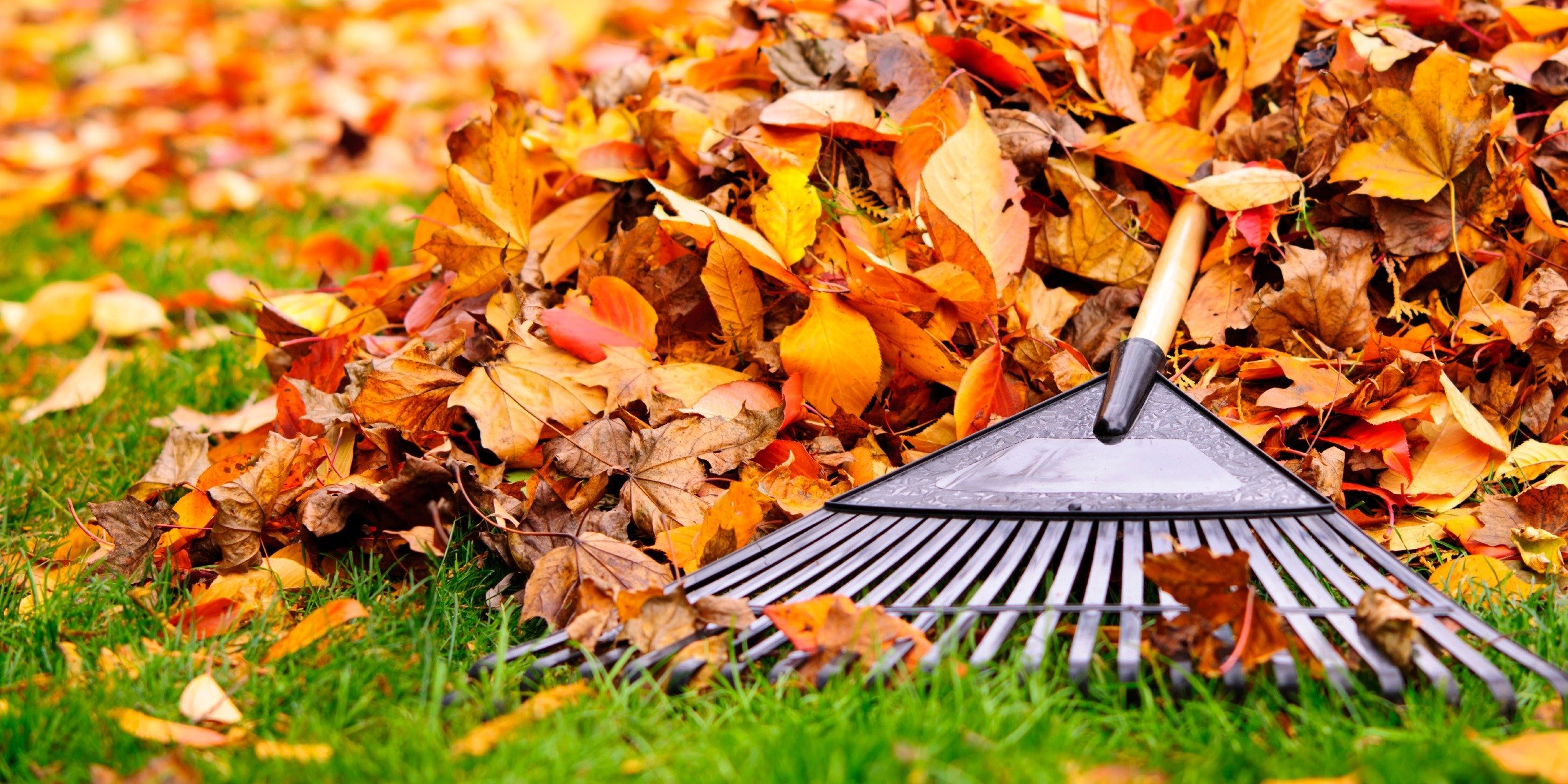Fall is officially here, but doesn’t mean that the lawn care just stops. Right up until the first hard frost, fall is the optimal time to create the lawn you’ve always wanted for next spring! With cooler temperatures and decent rainfall, your lawn is busy taking in energy and moisture, as well as the plant essential nutrients it needs to thrive in the new year.
There are a few things that are very beneficial for your lawn in the fall, but if you time it incorrectly, it can become a waste of time and energy. Continue reading to learn how giving your lawn a little extra TLC this fall will create healthy, green grass next spring.

Why fall lawn care is important:
- Root Strengthening: Fall is the time when grass plants divert their energy from leaf growth to root strengthening. By focusing on root development, your lawn becomes more resilient to stressors like winter cold and spring droughts.
- Weed Control: Weeds are persistent, and they can thrive even in cooler temperatures. Proper fall maintenance helps prevent weeds from taking over, giving your grass a better chance to flourish.
- Disease Prevention: Many lawn diseases become more active in the fall. Taking precautions now can help prevent outbreaks and ensure a healthy lawn next spring.
- Nutrient Absorption: Fertilizing in the fall helps your lawn absorb essential nutrients, which are stored for use during the dormant winter months. This sets the stage for a vibrant spring revival.
Our expert fall lawn care tips:
- Mowing
Adjust your mower to a lower setting for the final few mows of the season. This encourages the grass to thicken and minimizes the risk of snow mold. Avoid cutting more than one-third of the grass blade at a time.

- Aeration
It's recommended to aerate your lawn annually, and since the lawn is actively growing, Fall is the ideal time to do it. Core aeration is the process of manually removing small cores of soil from the lawn with an aerating machine. This is essential if you have compacted soil, which restricts your lawn's access to air, water, and nutrients.
Core Aeration relieves soil compaction, removes excess thatch, and encourages deep, healthy roots.
- Overseeding
Fall is an ideal time for overseeding, as the soil is still warm, but the air is cooler. This promotes strong root growth in new grass, ensuring a lush, healthy lawn in the spring.
- Fertilization
Choose a high-quality, slow-release fertilizer to provide your lawn with the nutrients it needs for winter survival. Avoid excessive nitrogen, as it can lead to winter damage.
Grass that’s fertilized in fall usually starts earlier and greens up faster in spring than lawns that aren’t fertilized in the fall. Timing is really important though. Fertilize too early and the grass puts those extra nutrients into new growth that’s killed off on the first hard frost. Fertilize too late and the plants don’t have a chance to absorb the nutrients before hard frost sends them into dormancy for the season.

- Raking and Leaf Removal
A layer of leaves can smother your grass and create an ideal environment for pests and diseases. Regularly rake and remove leaves to keep your lawn healthy.
- Watering
Continue to water your lawn as needed until the first hard frost. Be mindful of drought conditions and adjust your watering schedule accordingly.
- Pest Management
Inspect your lawn for signs of pests, such as grubs, and take appropriate action to prevent damage.
By following these fall lawn care tips, you're setting the foundation for a healthy, vibrant lawn come spring. At Nutrilawn, we're committed to helping you achieve a lush, thriving lawn year-round. Request your free quote today!



